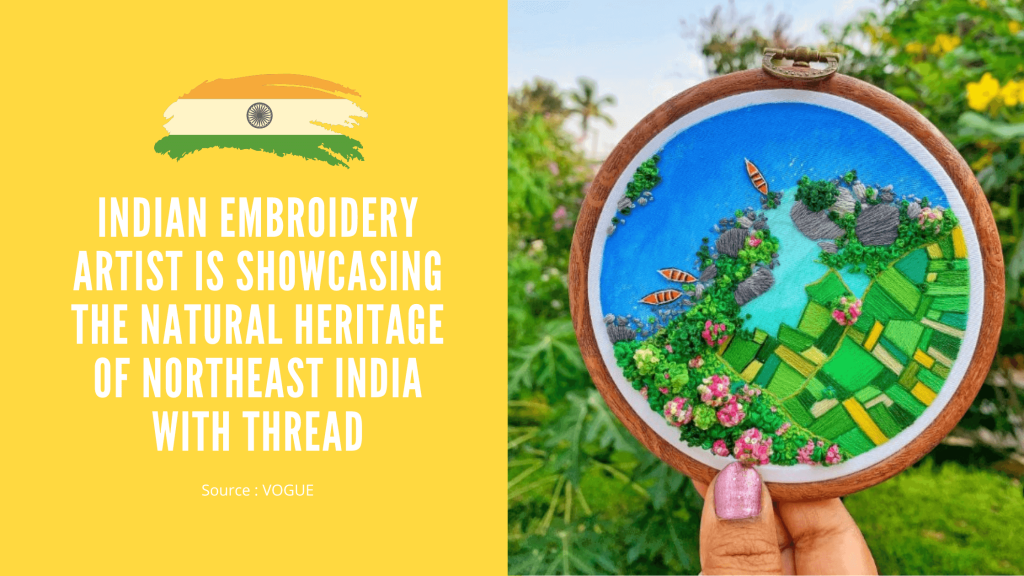Bengaluru-based Baruah, an urban planner and architect from Assam, grew up in Guwahati frequenting the tea gardens of Dibrugarh, where her grandparents lived, and her ancestral home in Zamira, a neighbouring hamlet. “There were hardly any well-paved roads. And no electricity until the early ’2000s. If we missed the local bus from town to Zamira, we had a two-hour walk through the tea gardens and villages to reach home,” she reminisces. “But it was fun and these experiences are a fundamental part of my artwork, influencing how I visualise nature and lived experiences.”
Baruah began to create embroidered art in 2020 when she took a break during the pandemic from teaching architecture to university students. Appreciation by friends and family made her realise that this pastime could be more meaningful. “Knowing that it could have a positive influence got me thinking about the plethora of unknown natural heritage in Northeast India.” Her work is tinged with nostalgia, of memories and visits to these locations preserved in thread, but also highlights the need to conserve these spaces, which are impacted by urbanisation.
Baruah’s background in architecture and urban planning provides a strong foundation for her art. A unifying thread through her work is water bodies—an affinity stemming from living around the Brahmaputra River—and swirly French knot stitches that transform into plump shrubs, meandering clusters of leaves on a lake, grassy clumps on hill slopes, or a shower of cherry blossoms. The use of different colours and thread thickness creates volume, depth and texture, while varied art forms and experimentation help her achieve distinct effects. In her Dawki River piece, she layered two hoops to convey depth: the underwater layer is strewn with pebbles while the surface has a transparent sheet with boats and swirling leaves skimming the surface.
Though small in size—the hoop frames between three to eight inches in diameter—the aerial view imbues an expansive generosity and depth. Baruah hopes her work will counter the various misconceptions about Northeast India that she has heard while living around India and abroad. “The only major information most people have is that it was occupied by extremist groups. I agree there was a time when unrest existed while growing up,” says Baruah, “but there was much more around us than just this part shown to the outside world.” Each of her pieces has detailed captions on her Instagram and Etsy store pages, educating viewers and customers with information about the landscapes she creates.
Read Full Article on Vogue


